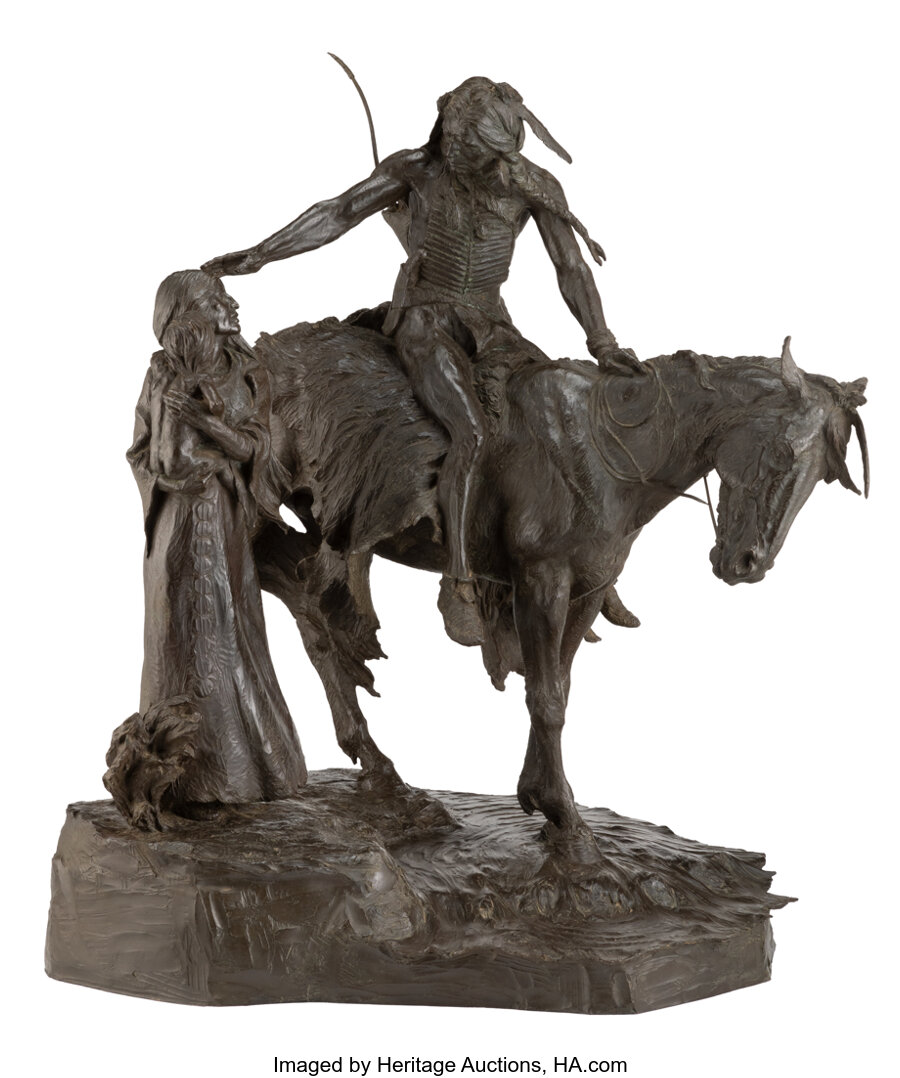Edward James Fraughton (American, b. 1939) The Last Farewell, 1975 Bronze with dark brown patina 38 inches (96.5 cm) high Ed. 14/15 Inscribed on base: Edward J. Fraughton / ©1975 / 14/15 Edward James Fraughton, born in 1939 in Park City, Utah, developed a deep connection to the landscapes, stories, and historical figures that shaped the frontier era. In 1973, he was nationally recognized with his first gold medal at the National Academy of Western Art for his sculpture Where Trails End. In 1980, Fraughton created the inaugural medal for President Reagan, and his Where Trails End was in Reagan's private quarters during his eight years in office. A founding member of the National Sculpture Society, Fraughton had received numerous awards for his contributions to American art, including his creations of public monuments, museum pieces, and private commissions. Among his most notable works is The Last Farewell, a powerful, large-scale bronze that captures a tender, heart-wrenching moment of a Native American warrior saying goodbye to his family. The warrior sits on horseback, leaning down in a final moment of connection. The woman, grounded and looking upward, holds her child with sorrowful intensity, her expression filled with longing and pain. The horse, draped in a buffalo robe, appears solemn, as if aware of the gravity of the moment. Unlike more traditional frontier sculptures that focus on conquest or action, The Last Farewell centers on the emotional impact of life in the West. It represents the broader history of displacement, love, and loss experienced by Native American communities. The warrior, strong and poised yet somber, conveys both dignity and vulnerability. Fraughton's attention to anatomical detail, combined with his ability to infuse a deep sense of emotion creates a profound narrative frozen in time. By choosing to highlight this farewell rather than a moment of conflict or celebration, Fraughton offers a poignant counter-narrative to typical Western tropes. He humanizes his subjects and gives voice to stories that are often overlooked or simplified. The Last Farewell stands out as a masterful example of how bronze can be used not just to depict form, but to convey emotion. In this work, Fraughton honors the intimate moments that define human experience—moments of love, separation, and remembrance—ensuring that the past is not just seen, but felt. HID12401132022 © 2024 Heritage Auctions | All Rights Reserved www.HA.com/TexasAuctioneerLicenseNotice



